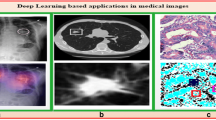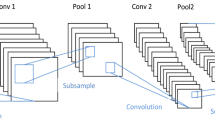Abstract
Melanoma is a fatal form of skin cancer when left undiagnosed. Computer-aided diagnosis systems powered by convolutional neural networks (CNNs) can improve diagnostic accuracy and save lives. CNNs have been successfully used in both skin lesion segmentation and classification. For reasons heretofore unclear, previous works have found image segmentation to be, conflictingly, both detrimental and beneficial to skin lesion classification. We investigate the effect of expanding the segmentation border to include pixels surrounding the target lesion. Ostensibly, segmenting a target skin lesion will remove inessential information, non-lesion skin, and artifacts to aid in classification. Our results indicate that segmentation border enlargement produces, to a certain degree, better results across all metrics of interest when using a convolutional based classifier built using the transfer learning paradigm. Consequently, preprocessing methods which produce borders larger than the actual lesion can potentially improve classifier performance, more than both perfect segmentation, using dermatologist created ground truth masks, and no segmentation altogether.



Similar content being viewed by others
References
Siegel RL, Miller KD, Jemal A: Cancer statistics, 2016. CA: Cancer J Clin 66(1):7–30, 2016
Guy GP, Machlin SR, Ekwueme DU, Yabroff KR: Prevalence and costs of skin cancer treatment in the US, 2002- 2006 and 2007- 2011. Am J Prev Med 48(2):183–187, 2015
Guy GP Jr, Ekwueme DU: Years of potential life lost and indirect costs of melanoma and non-melanoma skin cancer. Pharmacoeconomics 29(10):863–874, 2011
Nachbar F, Stolz W, Merkle T, Cognetta AB, Vogt T, Landthaler M, Bilek P, Braun Falco O, Plewig G: The ABCD rule of dermatoscopy: high prospective value in the diagnosis of doubtful melanocytic skin lesions. J Am Acad Dermatol 30(4):551–559, 1994
Argenziano G, Fabbrocini G, Carli P, De Giorgi V, Sammarco E, Delfino M: Epiluminescence microscopy for the diagnosis of doubtful melanocytic skin lesions: comparison of the ABCD rule of dermatoscopy and a new 7-point checklist based on pattern analysis. Arch Dermatol 134(12):1563–1570, 1998
Henning JS, Dusza SW, Wang SQ, Marghoob AA, Rabinovitz HS, Polsky D, Kopf AW: The CASH (color, architecture, symmetry, and homogeneity) algorithm for dermoscopy. J Am Acad Dermatol 56(1):45–52, 2007
Argenziano G, Soyer HP: Dermoscopy of pigmented skin lesions–a valuable tool for early diagnosis of melanoma. Lancet Oncol 2(7):443–449, 2001
Kittler H, Pehamberger H, Wolff K, Binder M: Diagnostic accuracy of dermoscopy. Lancet Oncol 3(3):159–165, 2002
Vestergaard M, Macaskill P, Holt P, Menzies S: Dermoscopy compared with naked eye examination for the diagnosis of primary melanoma: a meta-analysis of studies performed in a clinical setting. Brit J Dermatol 159(3):669–676, 2008
Esteva A, Kuprel B, Novoa RA, Ko J, Swetter SM, Blau HM, Thrun S: Dermatologist-level classification of skin cancer with deep neural networks. Nature 542(7639):115–118, 2017
Marques O: Morphological image processing. In: Practical image and video processing using MATLAB. Wiley - IEEE, chap. 13, 2011, pp 299–334
Oliveira RB, Mercedes Filho E, Ma Z, Papa JP, Pereira AS, Tavares JMR: Computational methods for the image segmentation of pigmented skin lesions: a review. Comput Methods Programs Biomed 131: 127–141, 2016
Burdick J, Marques O, Romero Lopez A, Giró Nieto X, Weinthal J: The impact of segmentation on the accuracy and sensitivity of a melanoma classifier based on skin lesion images. In: SIIM (Society for Imaging Informatics in Medicine) 2017 annual meeting. Pittsburgh, 2017, pp 1–6
Codella N, Nguyen QB, Pankanti S, Gutman D, Helba B, Halpern A, Smith JR: Deep learning ensembles for melanoma recognition in dermoscopy images, arXiv:1610.04662, 2016
Kawahara J, BenTaieb A, Hamarneh G: Deep features to classify skin lesions. In: IEEE International symposium on biomedical imaging (IEEE ISBI). Prague, 2016, pp 1397–1400
Lopez AR, Giro-i Nieto X, Burdick J, Marques O: Skin lesion classification from dermoscopic images using deep learning techniques.. In: 13th IASTED International conference on biomedical engineering (BioMed). IEEE, Innsbruck, 2017, pp 49– 54
Yu L, Chen H, Dou Q, Qin J, Heng PA: Automated melanoma recognition in dermoscopy images via very deep residual networks. IEEE Trans Med Imaging 36(4):994–1004, 2017
Jaworek Korjakowska J, Kłeczek P: Automatic classification of specific melanocytic lesions using artificial intelligence. BioMed Res Int, 2016, p 17
Simonyan K, Zisserman A Very deep convolutional networks for large-scale image recognition. arXiv:abs/1409.1556, 2014
Szegedy C, Vanhoucke V, Ioffe S, Shlens J, Wojna Z: Rethinking theInception architecture for computer vision. arXiv:1512.00567, 2016, pp 2818–2826
Deng J, Dong W, Socher R, Li LJ, Li K, Fei Fei L: ImageNet: a large-scale hierarchical image database.. In: 2009 IEEE Conference on computer vision and pattern recognition. IEEE, MIami, 2009, pp 248–255
Applications - InceptionV3. [Online]. https://keras.io/applications/#inceptionv3, 2016. Accessed 01 Sept 2017
Yosinski J, Clune J, Bengio Y, Lipson H: How transferable are features in deep neural networks?. In: Advances in neural information processing systems. Curran Associates, Inc., New York, 2014, pp 3320–3328
Krizhevsky A, Sutskever I, Hinton GE: ImageNet classification with deep convolutional neural networks.. In: Advances in neural information processing systems, vol 25. Curran Associates, Inc., New York, 2012, pp 1097–1105
Python. [Online]. https://www.python.org/, 2016. Accessed 01 Sept 2017
MathWorks: MATLAB. [Online]. https://www.mathworks.com/products/matlab.html, 2016. Accessed 01 Sept 2017
Keras documentation. [Online]. https://keras.io/, 2016. Accessed 01 Sept 2017
Theano 0.8.2. documentation. [Online]. http://deeplearning.net/software/theano/, 2016. Accessed 01 Sept 2017
TensorFlow. [Online]. https://www.tensorflow.org, 2017. Accessed 01 Sept 2017
scikit-learn: machine learning in python. [Online]. http://scikit-learn.org/, 2016. Accessed 2017-09-01
Python Imaging Library (PIL). [Online]. http://www.pythonware.com/products/pil/. Accessed 01 Sept 2017
CUDAm, Nvidia. [Online]. http://www.nvidia.com/object/cuda_home_new.html. Accessed 01 Sept 2017
ISIC Archive - International skin imaging collaboration: melanoma project. [Online]. https://isic-archive.com/, 2016. Accessed 01 Sept 2017
ISIC: ISBI 2016: Skin lesion analysis towards melanoma detection. [Online]. https://goo.gl/2A1913, Accessed 2016. 31 Aug 2017
tf.train.RMSPropOptimizer. [Online]. https://goo.gl/ULzaug, 2017. Accessed 01 Sept 2017
Acknowledgements
The authors gratefully acknowledge funding from NSF Award No. 1464537, Industry/University Cooperative Research Center, Phase II under NSF 13-542. We are also thankful to the 33 corporations that are the members of the Center for their active participation and funding.
Author information
Authors and Affiliations
Corresponding author
Rights and permissions
About this article
Cite this article
Burdick, J., Marques, O., Weinthal, J. et al. Rethinking Skin Lesion Segmentation in a Convolutional Classifier. J Digit Imaging 31, 435–440 (2018). https://doi.org/10.1007/s10278-017-0026-y
Published:
Issue Date:
DOI: https://doi.org/10.1007/s10278-017-0026-y




